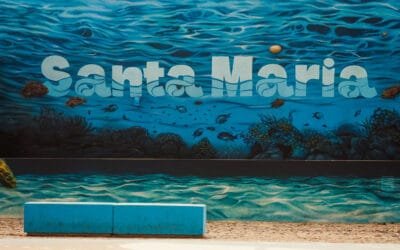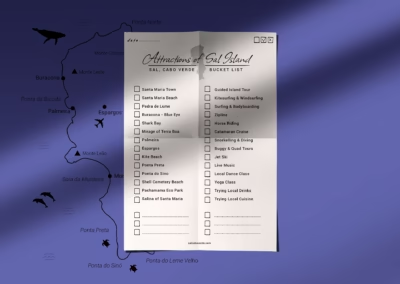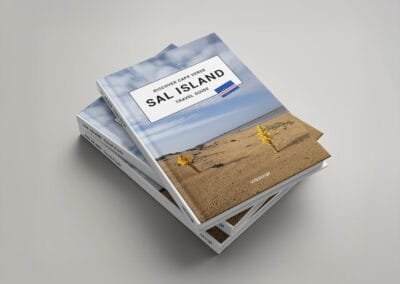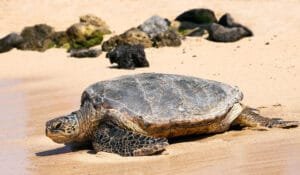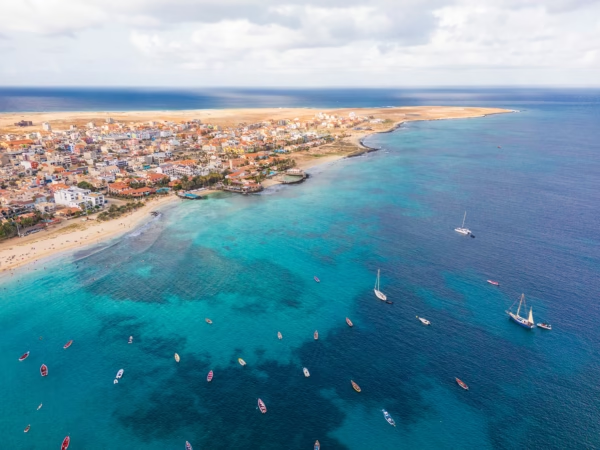Before You Go: Planning Your Great Sal Experience

Planning Your Sal Experience
Proper Timing
Sal’s weather remains consistent, with a 25°C average temperature and minimal rainfall. However, the seasons can slightly affect some of the activities available on the island.
If you’re interested in water sports, then please note that:
- From October to June, the trade winds provide the perfect conditions for beginner and intermediate kitesurfers and windsurfers.
- From December to April, stronger winds and waves transform the West Coast into a playground for more experienced riders.
- From July to October, the weather offers calmer conditions, making them better suited for diving, SUP, and water sports for beginners.
Turtle season, from July to October, offers unique wildlife experiences, providing the opportunity to witness the nesting and hatching of loggerhead turtles. This is a truly special experience for nature lovers, but it coincides with the windless period that frustrates kitesurfers.
European school holidays attract crowds and higher prices, but often without significantly better weather.
- The sweet spot might be November or May — good wind, fewer crowds, lower prices.
Money: Euro and Escudo
Cape Verde uses escudos (CVE), pegged to the euro at 110:1. ATMs in Santa Maria and Espargos dispense local currency. Many businesses accept euros but give change in escudos at unfavourable rates. Credit cards work at hotels and larger restaurants, but not at beach bars or local shops.
Prices reflect Sal’s dependence on imports. A beer costs €2-3, a basic meal costs €10-15, and a nice dinner costs €25-35. Activities aren’t cheap — expect €50-100 for most half-day adventures. Yet compared to Caribbean islands offering similar experiences, Sal provides value, especially for European visitors accustomed to higher prices.
Getting Around
The road from the Amílcar Cabral International Airport to Santa Maria is paved and straight. Everything else involves dirt roads of varying quality. Rental cars cost €30-50 per day for basic models and €60-80 for 4x4s, which are necessary to reach many attractions independently. The island’s size — 30 kilometres long, 12 wide — means nowhere is far, but road conditions make some journeys longer than expected.
Taxis work for simple transfers. The cost from Santa Maria to Espargos is €10, and to Palmeira or Pedra de Lume is around €20. Drivers are familiar with tourist sites, and many of them speak basic English. Aluguers (shared vans) serve local routes for €1-2 but require patience and flexibility.
Most visitors find that organised tours provide better value than renting a car for a single-day exploration.
Transportation from the airport is relatively easy and stress-free. You can take a taxi, a bus, or an alouger (if you don’t have much luggage).
The Sal Experience
Most importantly, Sal delivers on its climate promise. The sun shines 350 days annually. The wind blows when it should. The ocean stays warm year-round. This reliability, rare in adventure destinations, lets visitors plan with confidence. Book kitesurfing lessons, reserve restaurant tables, schedule spa treatments — the weather won’t interfere.
Sal’s attraction choice is vast, and below I have listed all the most popular ones.
Water Sports
- kitesurfing
- windsurfing
- surfing
- paddleboarding (SUP)
- bodyboarding
- wingfoil
- jet-ski
- diving
- snorkelling
- fishing
- sailing
Land Adventures
- guided island tours
- buggy tours
- quad tours
- segway tours
- 4×4 adventures
- Zipline
- horse riding
- bicycle rental
- trekking
- golf
Natural Wonders
- lemon shark encounters
- turtle watching
- whale watching
- birdwatching
- salt pond floating
- Blue Eye of Buracona
- desert mirages
- botanical garden & zoo
Leisure
- Cape Verdean cuisine
- beach sunbathing
- football
- volleyball
- outdoor gym
- ouril board game
- spa rituals
- yoga
Books, Colouring Pages and Bucket Lists
Check out our books and free downloadable materials. We’ve prepared some nice bucket lists to help you pack for your adventure and explore Sal Island. There are also some island maps and beautiful, hand-drawn colouring pages for kids and adults.
Final Notes
Sal Island succeeds by not trying to be everything to everyone. It’s not a cultural destination like Santiago. However, it does offer a unique blend of African and Portuguese influences, which can be experienced in the local cuisine, music, and during festivals, especially carnival. While it lacks the hiking of Santo Antão and can’t match Fogo’s dramatic volcanoes, Sal focuses on its best lazy leisure and water sports, simple adventure activities and reliable sunshine. For visitors seeking those specific experiences, the island delivers consistently.
The development that some criticise as excessive, particularly in the Santa Maria area, has made Sal accessible to travellers who might not otherwise visit Cape Verde. Direct flights from European cities, international-standard hotels, and organised activities lower barriers to entry.
Further Reading:
- Where to Stay on Sal? The Best Options with Prices
- Sal Low-Cost: How to Have a Great Stay on a Low Budget
- Digital Nomads: What’s the Best Place To Stay On Sal?
- Escudos: All You Need to Know About The Currency
- What’s the Time in Cape Verde Now? Life in UTC-01:00
- Cabo Verde in a Nutshell: History, Culture, Politics & Art

